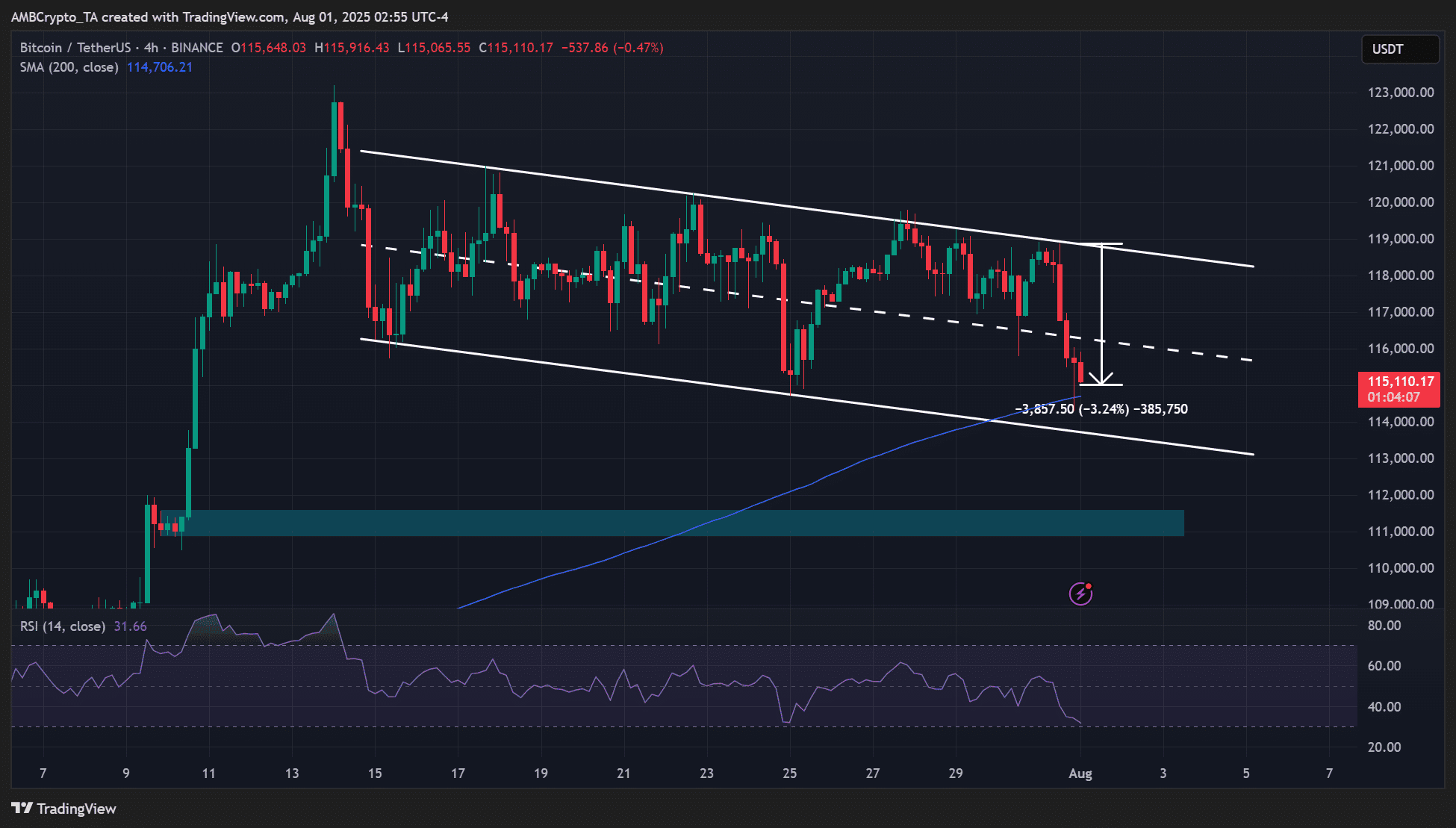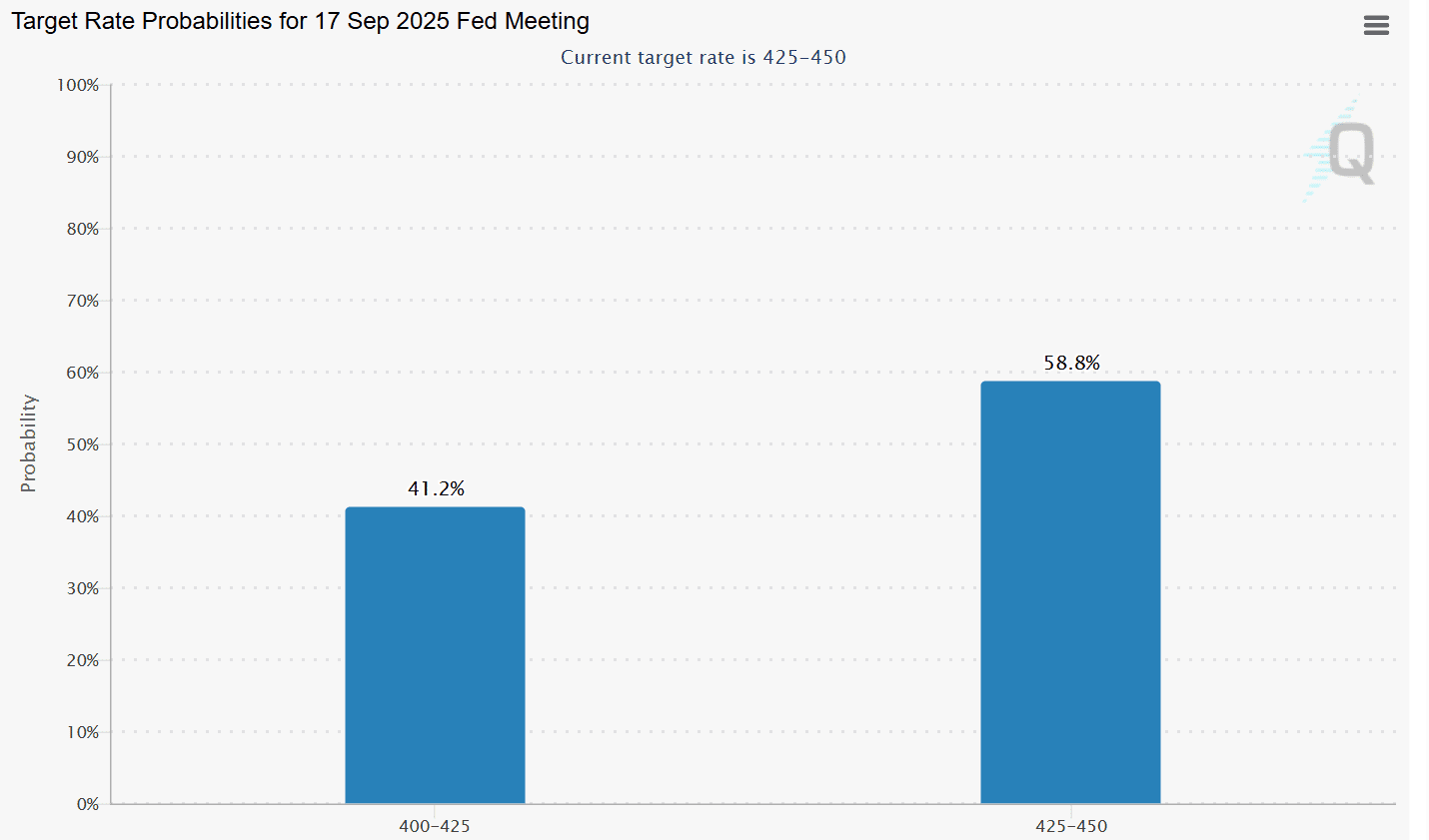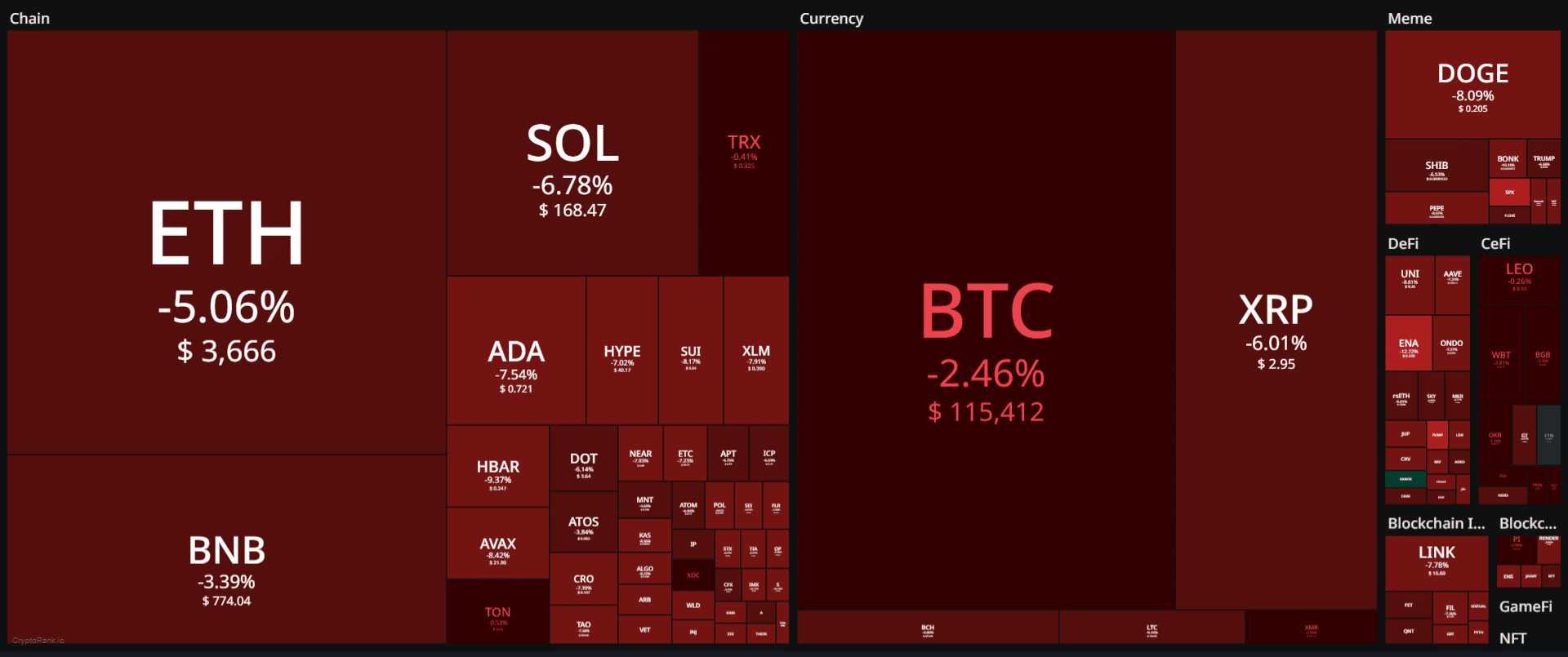Concerns over new U.S. tariffs and stubborn inflation have lowered expectations for a Federal Reserve rate cut in September, triggering a sell-off in major cryptocurrencies like Bitcoin, Dogecoin, and Ripple, leading to a significant decline in the cryptocurrency market today.
The cryptocurrency market has fallen under the impact of increased tariffs and inflation concerns, with reduced probabilities of Federal Reserve interest rate cuts. Stay tuned for the latest analysis from COINOTAG.
How do new tariffs affect the cryptocurrency market?
The United States recently officially announced an increase in tariffs through an executive order, exacerbating the macroeconomic headwinds affecting cryptocurrencies. Tariffs on Canada were raised from 25% to 35%, and tariffs on other trading partner countries also face increases of 10% to 40%. These changes will take effect seven days after the announcement, bringing uncertainty and impacting investor sentiment. As traders anticipated potential disruptions in global trade and faced inflationary pressures, the cryptocurrency market reacted negatively.
What does the inflation data reveal about market sentiment?
The inflation indicator closely watched by the Federal Reserve—core Personal Consumption Expenditures (PCE, excluding volatile food and energy prices)—rose 0.3% in June, year-over-year to 2.8%. This exceeded the Federal Reserve's target of 2.0%, indicating that inflation remains persistent. Experts like Harry Chambers from Capital Economics emphasize that tariff-driven inflation continues to be a significant concern, reducing the likelihood of rate cuts in September. Consequently, the market currently expects a 58% chance of a pause in interest rates, which typically dampens interest in risk assets like cryptocurrencies.

Source: BTC/USDT, TradingView
Why are cryptocurrencies like DOGE and XRP leading the sell-off?
Cryptocurrencies typically benefit from Federal Reserve interest rate cuts, as lower rates reduce borrowing costs and encourage investors to put money into riskier assets. However, with the probability of rate cuts dropping below 50%, investors are retreating from volatile assets. Dogecoin and Cardano saw the largest declines, both dropping around 8%, while Ripple and Solana fell over 6%. Bitcoin also dropped 3%, falling below $115,000, before stabilizing. This sell-off reflects the market's cautious stance amid uncertainty over monetary policy and tariff-related inflation risks.

Source: CME FedWatch Tool
How do Federal Reserve interest rate expectations affect cryptocurrency prices?
Federal Reserve rate decisions directly influence investor behavior in the cryptocurrency market. Rate cuts reduce capital costs, encouraging investment in high-risk assets like cryptocurrencies. Conversely, rate hikes or pauses increase borrowing costs and reduce liquidity, triggering market sell-offs. Current market data shows that the probability of a pause in rate hikes in September has risen to 58%, intensifying the downward pressure on cryptocurrency prices recently.
What are the latest market performance indicators?
24-hour changes in cryptocurrencies compared to BTC: Dogecoin (DOGE) -8% underperformed BTC by 5%; Ripple (XRP) -6% underperformed BTC by 3%; Bitcoin (BTC) -3% benchmark.

Source: CryptoRank
Frequently Asked Questions
Why is the cryptocurrency market down today?
With the new U.S. tariffs increasing trade costs and inflation remaining persistently above the Federal Reserve's target, expectations for rate cuts have decreased and led to cautious investor behavior, resulting in a drop in the cryptocurrency market.
How does inflation affect cryptocurrency prices?
Rising inflation rates typically lead to tighter monetary policy, increasing borrowing costs and reducing liquidity, which negatively impacts cryptocurrency prices as investors move towards safer assets.
Key Points
Tariff increases: New U.S. tariffs on global partners have created uncertainty and placed pressure on the cryptocurrency market.
Persistence of inflation: Core PCE inflation remains above target, reducing the likelihood of Federal Reserve rate cuts.
Market response: Increased macroeconomic risks have led to major cryptocurrencies like DOGE and XRP leading the decline.
Conclusion
The sluggishness of the cryptocurrency market reflects the growing macroeconomic pressures from increased tariffs and persistent inflation. With the Federal Reserve unlikely to cut rates in the short term, investor sentiment remains cautious, affecting the performance of major cryptocurrencies. Monitoring these economic indicators is crucial for predicting future market trends and formulating investment strategies.